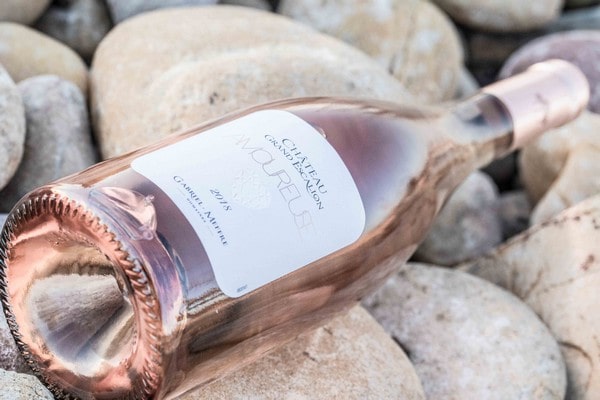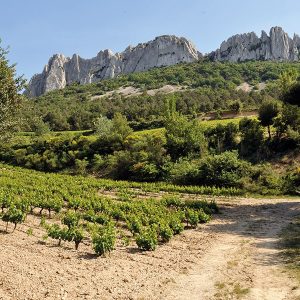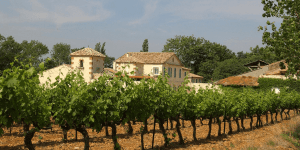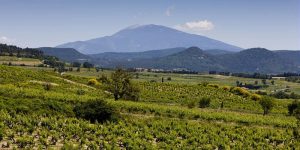Saignée method or direct pressing?
Vinification using the saignée” method (“bleeding”) consists of macerating, i.e. soaking, the grapes. The grapes are first pressed to split the skin and release the pulp, seeds and juice. The flavours and pigments in these components are left to disperse for as much time as is needed to achieve the desired colour, up to several hours. The tank is then “saignée”, or bled: after the valve is opened, the juice is collected, settled (or clarified) to separate the solids (skin and seeds) from the liquid (juice). The next stage isfermenting thejuice at lowtemperature. It isthis method which produces our Tavel rosé Gabriel Meffre.
Direct pressing entails crushing whole grapes in the press. An operation intended to limit the contact between the juice and the skin of the grapes to produce a wine with a pale pink hue. The very ripe berries, engorged with sugar, combines with the younger, more acidic berries. The following operation is the same as for vinification using the “saignée” method: the primary aromas are extracted directly from the grapes at maceration, then the secondary aromas during low-temperature fermentation. We make our Côtes du Rhône and Côtes de Provence rosés in this way, wines which our customers expect to be pale and fruity.
By appellation and grape variety
Winemaker Véronique Torcolacci explains:
“When producing our Gabriel Meffre Côtes du Rhône, we focus our attention on the expression of the red fruit and blackcurrant aromas from the Syrah. This very ‘colourful’ grape variety is vinified first to reduce the degree of colouration of the juice and the alcohol content.”
Regarding the Grenache, our aim is to ripen the grapes until their fruity notes, peach in particular, are revealed.
Lastly, the Cinsault is added to the final blend to balance the wine between round and lively and raise its aromatic potential.
For all of our rosé wines, “we are always very careful on the balance between alcohol and acidity. Above all else, I want to produce wines that are appreciated for being fresh and a perfect match with summer dishes,” concludes Véronique.

The particular case of Cuvée Amoureuse
Made from selected vineyards at Château Grand Escalion, our Cuvée Amoureuse is made from a blend of red and white grape varieties.
“With this vinification method, we produce a rosé in which the floral notes, extracted from the white grapes, blend harmoniously with the fruity notes from the red grapes.
A distinction which creates a rosé to be enjoyed alone or the ideal fine-dining wine to pair with sophisticated dishes,including seafood.
Producing rosés that are fresh, balanced and richly aromatic in equal measure is a priority for us. Principles which determine our vinification choices, our creativity and, ultimately, the wines we bring to market
This article features the expertise of a member of the Gabriel Meffre team, namely
Véronique Torcolacci, Purchasing & Wine Quality Director. After joining the company in 1991, today Véronique is in charge of overseeing the style and quality of Gabriel Meffre wines. From parcel selection to vinification, each wine passes through her and her team’s expert hands.
Rubrics
Découvrez plus d'articles...

The vineyard and wine cellar in winter
What happens in the world of wine during the winter period? After the hustle and bustle of autumn, the harvests and vinification process, comes winter, a season devoted to maturation and looking after the vines.

In 2018, we will continue to strive to be a Responsible Company!
In this new year, our wish to help build a world that respects both mankind and the environment is as strong as ever. This can be seen through the number of our projects for 2018 that are closely related to our convictions as a Responsible Winery. We’re delighted to be given the opportunity to tell you about them!

Discovering the art of pairing wine and chocolate
A morsel of white chocolate, Black Forest gâteau, pieces of stem ginger wrapped in chocolate, or Mexican chicken in chocolate sauce—all very appetising, but which wine would you serve with each one? Food and wine pairings factor in a combination of elements, such as the terroir, our powers of concentration, the circumstances of the tasting session, our sense memory and more. We guide you through some of the basic principles of this fascinating world!







